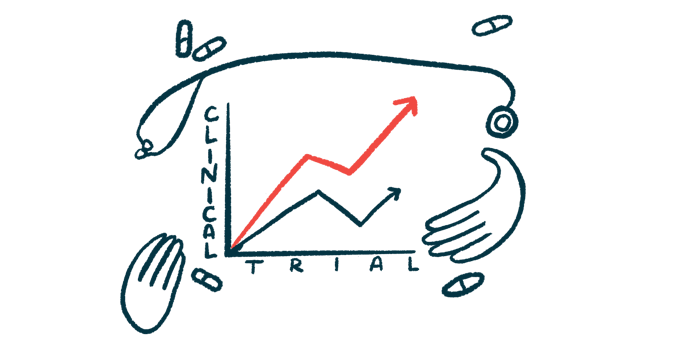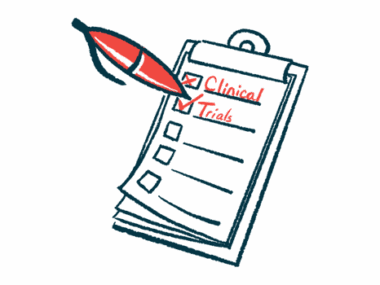Sjögren’s treatment ianalumab shows rapid disease relief in trials
Patients on therapy see results within two months, data show
Written by |

People with Sjögren’s disease who received the experimental therapy ianalumab (VAY736) in Phase 3 clinical trials reported greater reductions in disease activity than those given a placebo within two months of starting treatment.
That’s according to new data ianalumab’s developer, Novartis, shared at the American College of Rheumatology Convergence, held Oct. 24-29 in Chicago, in a presentation titled “Ianalumab demonstrates significant reduction in disease activity in patients with Sjögren’s disease: Efficacy and safety results from two global Phase 3, randomized, placebo-controlled double-blind studies (NEPTUNUS-1 and NEPTUNUS-2).” The data were also discussed on a recent Novartis webcast.
The findings “reinforce our confidence that ianalumab has the potential to transform the treatment of this complex disease where no targeted medications currently exist,” Shreeram Aradhye, MD, Novartis’ president of development and chief medical officer, said in a company press release.
“The NEPTUNUS trials were the first Phase III studies in Sjögren’s in which a treatment significantly improved disease activity and demonstrated that ianalumab has the potential to provide a clinically meaningful benefit to patients,” said Xavier Mariette, MD, PhD, a professor at Paris-Saclay University in France.
Novartis plans to file regulatory applications early next year seeking approval for ianalumab to treat Sjögren’s. “We look forward to working with health authorities globally to bring this innovation to people with Sjögren’s disease,” Aradhye said.
Treatment aims to reduce ‘substantial disease burden’
Sjögren’s is caused by self-reactive antibodies that attack the body’s own healthy tissue, most commonly the tear- and saliva-producing glands. It affects “multiple organs causing a wide spectrum of symptoms such as dryness, fatigue, pain, and an increased risk of lymphoma [a blood cancer] – that together may create a substantial disease burden,” Mariette said.
Ianalumab is designed to reduce the activity of B-cells, the immune cells that make antibodies. The therapy, given by under-the-skin injection, works by simultaneously blocking a signaling molecule that promotes B-cell survival and marking the cells for destruction.
The global Phase 3 clinical trials NEPTUNUS-1 (NCT05350072) and NEPTUNUS-2 (NCT05349214) tested ianalumab against a placebo in nearly 800 people with Sjögren’s. Participants were allowed to continue their background immunosuppressive treatments.
The studies’ main goal was to see if ianalumab would reduce disease activity, as measured by the European Alliance of Associations for Rheumatology Sjögren’s Syndrome Disease Activity Index (ESSDAI), after about a year of treatment.
Novartis announced earlier this year that the studies both met their main goal: Participants given monthly injections of ianalumab had significantly greater score reductions in the ESSDAI, reflecting less severe disease, than those on the placebo.
In a pooled analysis of more than 600 participants given monthly injections of ianalumab or a placebo across both studies, the average ESSDAI score dropped by an average of 6.5 points for those given ianalumab and 5.3 points for those on the placebo after one year. A significant difference between the ianalumab and placebo groups was evident after about four to six months of treatment, and persisted for the duration of the trial.
Key secondary goals in the NEPTUNUS studies were to assess changes in scores on the Patient’s Global Assessment and the Physician’s Global Assessment, which are patient- and clinician-rated measures of overall health.
Again, pooled data from both trials showed that ianalumab-treated patients had significantly greater score reductions, reflecting health improvements, on both measures. In the patient-reported measure, a significant difference between the ianalumab and placebo groups was detected as early as eight weeks (about two months) after starting treatment.
“Very similar to ESSDAI, [the Patient’s Global Assessment showed] a fast and sustained symptom relief [with ianalumab], as early as week eight and up to week 52 [one year],” Angelika Jahreis, MD, PhD, Novartis’ global head of immunology development unit, said on the company webcast. Jahreis noted that physician-rated scores showed similar trends.
Patients, physicians note benefits
Results on other secondary goals, including patient-reported outcomes and measures of disease activity, also tended to favor ianalumab over the placebo. However, differences were generally not statistically significant, meaning they could be due to random chance.
Still, significantly more ianalumab-treated patients achieved an ESSDAI score below 5, which is “associated with better outcomes … [and] a reduction of long-term damage over time,” Jahreis said.
“We have consistent improvement across secondary [measures],” Jahreis said, and “patients also felt that the treatment really improved their quality of life, physicians concurred with that, and we have numerical improvement in other patient-reported outcomes.”
The therapy also significantly improved salivary flow in the subset of participants who still maintained salivary function at the study’s start. Those with reduced salivary flow at study start didn’t show improvement with ianalumab, which may be due to extensive, irreversible damage to their salivary glands, Jahreis said.
These salivary flow data are “incredibly exciting” because they imply that ianalumab may be able to slow disease progression, Jahreis said.
Safety data showed rates of adverse and serious adverse events were similar among participants given ianalumab or placebo. One person, who had been on the placebo, died during the study.







